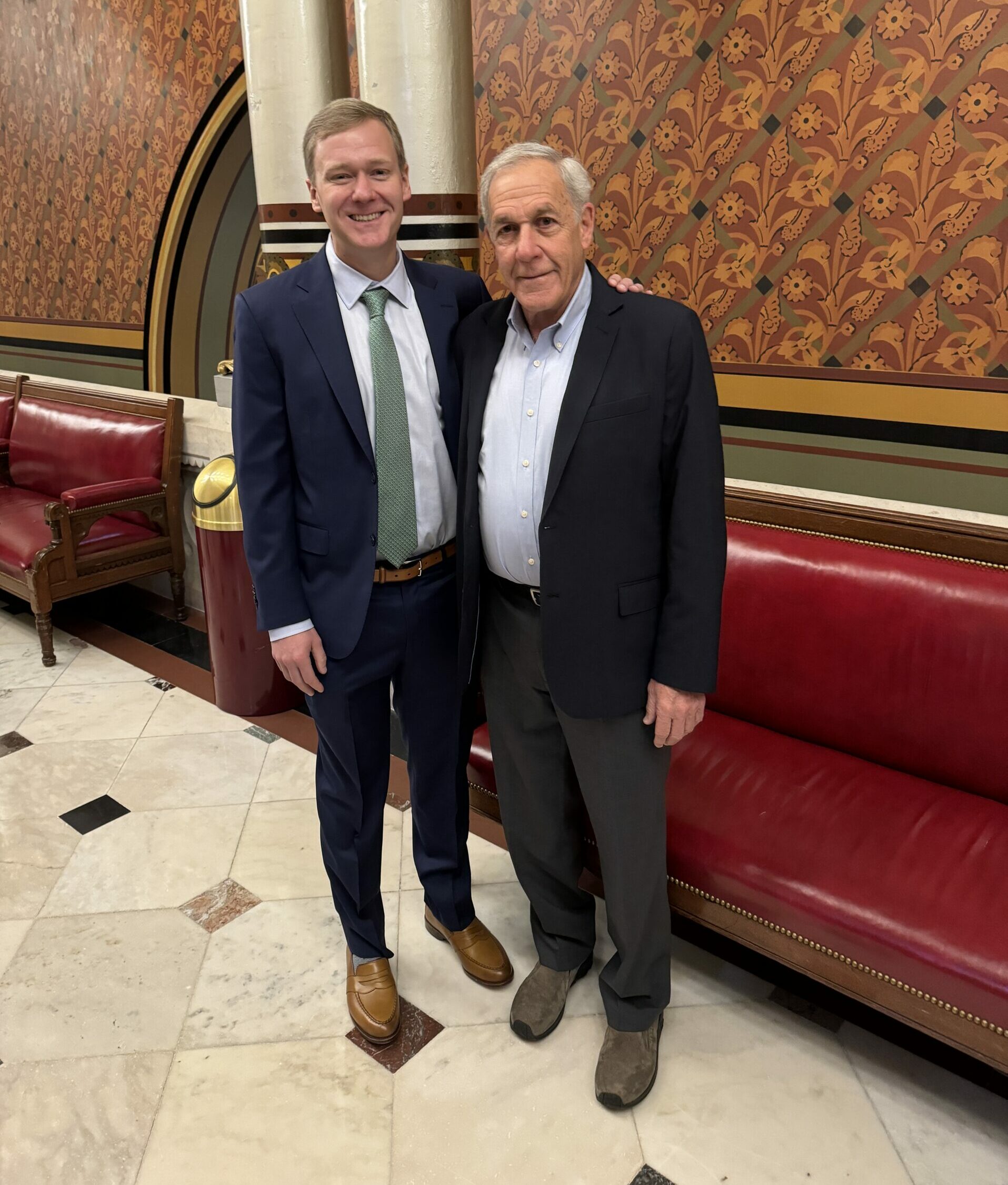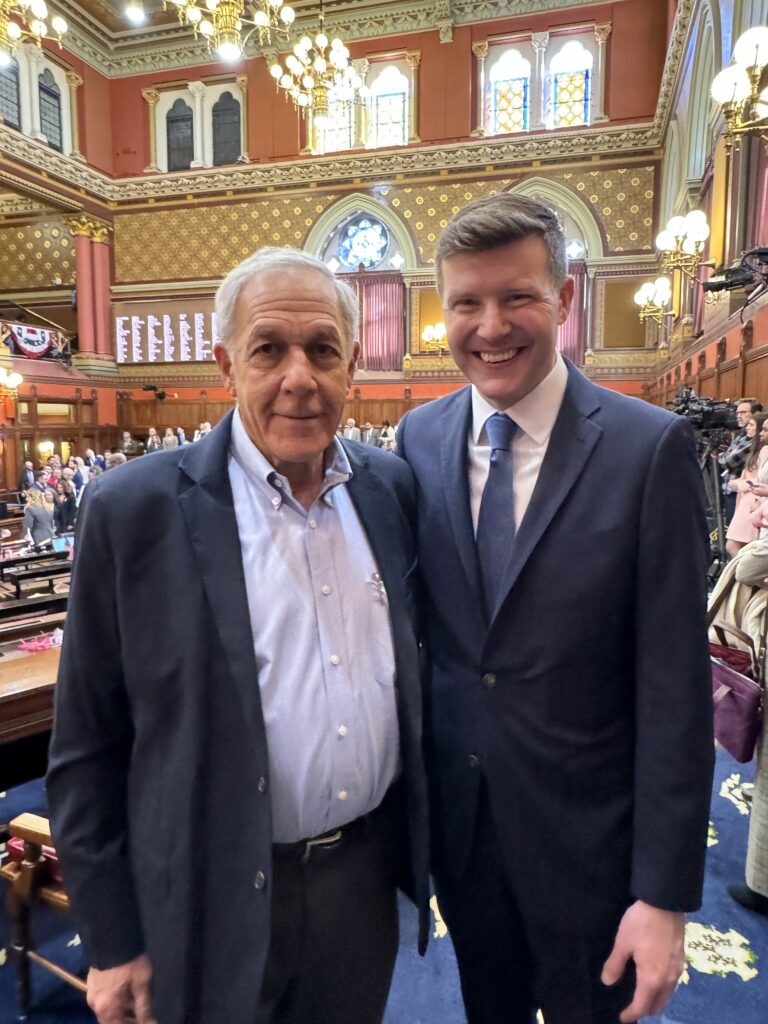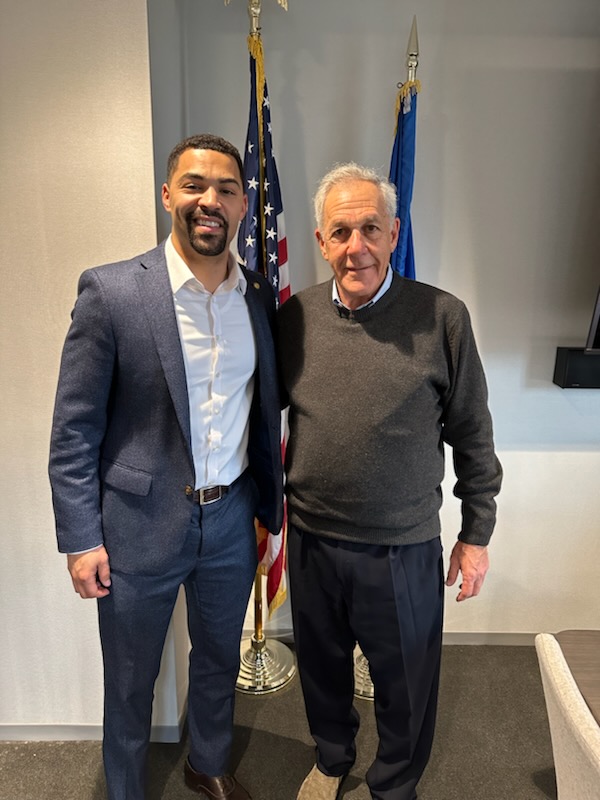
Over the last decade, Connecticut has made important strides towards being a more fiscally responsible State through the implementation of a set of fiscal guardrails. This was after years of large budget deficits and volatility in funding of programs. Despite these recent successes, significant challenges remain that will require having legislators who are committed to and knowledgeable about real fiscal discipline while balancing the various needs of the State and its people. (Ed is shown here with his friend Matt Ritter, speaker of the House in the Connecticut General Assembly.)
My Experience and Knowledge of Fiscal Guardrails
As Southbury’s First Selectman, I experienced the volatility in the State’s financing as each year we were left guessing as to the extent of “municipal aid” from the State. As part of an effort to make the 169 municipalities of Connecticut less dependent on property tax, Connecticut had established numerous programs to provide state money for local and regional schools, infrastructure and other grant programs. However, with looming deficits, local leaders were often left guessing when creating a municipal budget. When expressing that frustration to my friend and former Comptroller Kevin Lembo, he laid out the need for more “fiscal guardrails” to reduce the volatility of Connecticut’s fiscal outlook. I was skeptical at the time.
Now looking at the recent success of these guardrails, I understand how they have succeeded in reducing volatility, allowed significant reduction in our underfunding of the large pension obligations for State employees and teachers, and increased our state bond rating, thus lowering interest costs. When the state is on a more secure financial footing, towns like Southbury, Roxbury, Bridgewater and New Milford benefit by way of their own higher bond ratings and lower interest cost.
This is one reason the State has been able to lower the marginal tax rates in 2024: the 3% marginal tax rate decreases to 2% and the 5% marginal rate decreases to 4.5% – representing the largest personal income tax cut in state history. This is a great example of how effective state policies can make a big difference.

Why the Guardrails Need Adjusting
There are four guardrails – Spending Cap, Volatility Cap, Revenue Cap, and Bonding Limits – that any proposed budget must meet. . For example, the Spending Cap requires that the expenses budgeted must be 2% below the revenue expected in the budget. This is to allow for unexpected expenditures; any surplus at the end of the fiscal year is placed in the so-called “rainy day fund”. The Volatility Cap looks at certain revenue streams that are volatile and places a portion of this into the rainy day fund.

As noted, the guardrails have worked quite well, and the state is on a much more secure footing. To be clear, I’m very much in favor of keeping the guardrails in place. However, some legislators point out that currently, they have created an austere situation where the state is arguably now sitting on too much money. Even good policies need fine tuning as events change the financial environment.
This will be the challenge of the new legislators elected in 2024 and it’s one I’m eager to tackle. This may involve adjusting the caps (e.g. percentages) going forward as well as considering where the current surplus funds should be allocated. Depending on the proposals, the legislature could lower taxes, fund more social programs, or invest in improved infrastructure. Frankly, these are much better challenges to have than worrying about budget deficits, but they will require a great deal of preparation and careful planning.
What I plan to do
For most of my professional life I have been involved in creating budgets whether for the Town of Southbury, or various parts of ExxonMobil where I worked in the Corporate Planning Department at the Headquarters in New York City as well as country manager for Esso in Bermuda. One key take-away that applies to Connecticut is the balance between the short-term needs versus the need for long-term investments.
I believe this experience positions me well to come up to speed on the trade-offs that the legislature will face in the spring of 2025. I have already engaged with current legislators on the topic to learn about their perspectives and to build the relationships needed to navigate through the next budget cycle. I have also made sure to listen to voters on where they stand and what’s important for them.
I enjoy drafting posts and position statements such as this because I believe topics as complex as the future of the state’s fiscal guardrails shouldn’t be reduced to a campaign slogan or flyer. It seems to me that every candidate running for office always stresses “fiscal responsibility” but few are willing to go in depth about what that actually means.
I also recognize that issues like the fiscal guardrails are going to take a lot of time to get right. That’s going to involve a lot of studies, meetings, negotiations, hearings, and more. I’m up for that challenge and I want to remind voters that I am the only candidate in the race who is fully committed to serving as a full-time state legislator.
It’s all about fiscal money management. and without that we have nothing. Ed’s skills and money management expertise is very much what the 69th district needs.
Hello edelson4ct.com owner, Your posts are always well-delivered and engaging.